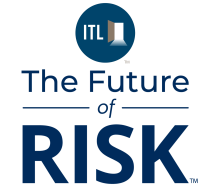Generative AI (gen AI) is transforming how we work and conduct business, and its impact is particularly evident in the insurance industry. From improving customer interactions to driving process efficiency and supporting decision-making, the technology is reshaping the entire value chain.
With gen AI's applications and use cases continuing to expand, our recent C-suite survey reflects a surge in optimism and confidence in the technology among insurers. 82% of insurance decision-makers now see greater potential for business impact from gen AI, based on their experience with the technology over the past year. Furthermore, 84% of leaders expect their organizations to increase their gen AI investment in 2025 as compared with 2024.
For insurers, this is an opportunity to capitalize on the immense potential that will come with scaling this technology to drive long-term growth. However, there are several key requisites that must be addressed to ensure a successful and responsible integration when designing a gen AI strategy:
Lead with value
Although gen AI has the potential to affect the full value chain, we see the greatest potential in underwriting/distribution and claims.
Research shows that 40% of the average underwriter’s time is spent on administrative and other non-core tasks. These demands and the surges in submissions in turn lead to an increase in workload without a proportional increase in revenue. Through automation and task augmentation, gen AI can help underwriters handle more tasks, work more efficiently, reach better decisions faster and win more business. For example, we worked with QBE, a multinational insurance company, to scale industry-leading AI-powered underwriting solutions across multiple regions and lines of business. They are now able to make faster, more accurate business decisions and greatly accelerate market response time. Early results also indicate an increase in both quote-to-bind rate and premium.
Gen AI can significantly enhance claims processing and outcomes, whether for frequency or severity claims. Additionally, using gen AI in claims can also improve rating and pricing activities. As a best practice, carriers can incorporate learnings extracted from unstructured claims data into a feedback loop for underwriting to guide future decisions, guidelines and appetite.
Reinvent talent and ways of working
Job displacement is a common concern when discussing gen AI. However, in the insurance industry, gen AI is more likely to augment, not replace, human activity. Regulation and licensing requirements need licensed professionals to make and communicate decisions. Unless requirements change, these roles cannot be replaced by AI.
In fact, both automation and augmentation with gen AI will create daily benefits for workers. Research shows that 29% of working hours in the insurance industry can be automated by gen AI, relieving workers of many of their more mundane and tedious tasks. What's more, 36% of working hours can be augmented by gen AI, which is crucial as the industry faces staffing shortages due to an aging workforce and competition for talent.
Close the gap on responsible AI
Insurers hold a position of trust when storing and processing sensitive data belonging to customers and partners, and it's important that this trust is maintained as gen AI becomes more integrated into operations.
As gen AI becomes more autonomous, the need for responsible AI practices becomes a necessity. Insurers must implement systematic testing and monitoring across quantitative and qualitative dimensions to manage risk with the highest ethical standards. This includes controls for data privacy, cybersecurity and sustainability, to ensure compliance as regulatory requirements inevitably increase.
Quantifiable measures help demonstrate the insurer's due diligence amid escalating cyber threats. Qualitative controls are equally important, improving transparency, explainability, accuracy, and safety. Insurance products can be hard for many customers to understand, and these issues are harder to navigate in communities where past discriminatory practices have undermined industry trust.
Build an AI-enabled, secure digital core
To fully realize the potential of gen AI, insurers require a strong digital core and a secure cloud. This starts with a simplified cloud infrastructure that integrates with core systems and can support the data and model needs of AI. A continuum control plane can serve as a unified command center, orchestrating infrastructure, applications, data, network, people and processes and simplifying cloud integration across a range of vendors. This not only improves operational resilience but also enhances visibility across the enterprise and can address complexities associated with moving operations to the cloud.
Security is another critical component essential to operational resilience and data protection. As the threat landscape evolves, insurers must implement systems that reduce the risk of breaches and adopt post-quantum encryption methods to protect vital and sensitive information. A modernized data platform, leveraging technologies like vectorDBs and knowledge graphs, can help insurers make the most of their data while ensuring compliance and privacy.
Foundation models can be easily integrated with the primary cloud setup. However, as needs become more complex, it's important to reassess priorities and retrain or build a new model to address specific goals and market realities. A model switchboard allows for dynamic adjustments to models based on the weight assigned to various priorities, such as accuracy, efficiency and cost.
The AI and gen AI capabilities of core insurance platforms are evolving quickly. For example, we’ve embedded AI and gen AI throughout our Accenture Life Insurance and Annuity Platform (ALIP) with cloud-managed services that include an AI-led user experience with conversational AI navigation and intelligent alerts.
Embrace change and continuous reinvention
Many insurers are now seeing material economic gains as they scale their AI and gen AI investments for continuous reinvention. This involves disciplined replication and re-use of gen AI solutions. Multiple lines of business in claims or multiple products in underwriting may be able to use the same user interface (UI) and user experience (UX) for gen AI implementations. Investments in UI/UX, front-end and back-end coding, rule and prompt libraries and data modernization can often be leveraged across the value chain.
Insurers are accelerating their reinvention journey with gen AI. They are building a culture and capability for continuous reinvention by centering every function in the value chain around a modern digital core. As such, the future of insurance will be led by those companies that can seamlessly blend human expertise with this technology, redefining what it means to be a trusted and innovative insurer.







